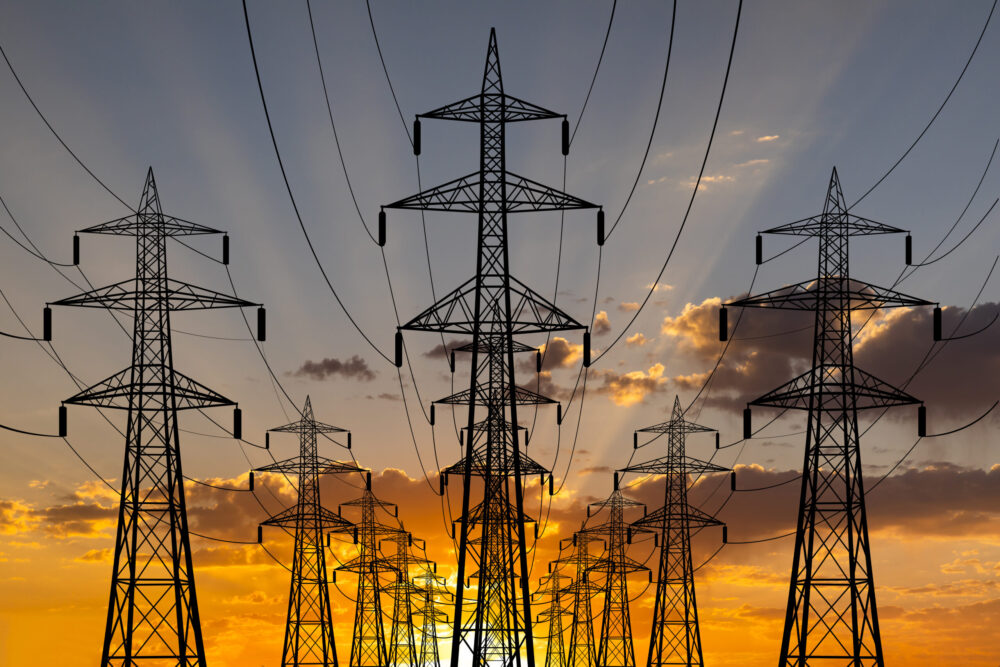
Joshua Haiar/South Dakota Searchlight
There are few wind turbines west of the Missouri River in South Dakota, and some experts say a lack of transmission lines is the main reason.
A group of energy consultants is raising money to study a potential project that could change that. The $9 billion transmission line would unite the eastern and western power grids of the U.S. with a line traversing southern South Dakota.
The Power from the Prairie project would connect the two U.S. grids (which both have a footprint in South Dakota) with a 4,000-megawatt electric transmission line. That’s enough electricity to power around 4 million homes, according to Robert Schulte, the project’s president and principal at Schulte Associates, an energy consulting firm in North Carolina. He spoke with the South Dakota Wind Energy Association and South Dakota Renewable Energy Association about the project on Sept. 29 in Sioux Falls.
“We are creating a superhighway to export clean energy out of the Upper Midwest,” Schulte said. He said some electric utilities don’t think outside of their own service territories, which means they don’t plan inter-regionally.
“We’re out to be productively disruptive to the old way of doing things,” Schulte said.
The transmission line would run across South Dakota from eastern Colorado to central Iowa. It would connect to other projects that have already been permitted. The Colorado end would connect to lines that run all the way to California, and the Iowa end would connect to a line that extends to Illinois.
The project’s leaders are recruiting utilities to help fund an 18-month, $4.8 million proof-of-concept study. The $9 billion project would largely be funded by those utilities, which would in turn receive an allocation of megawatts to transmit via the line.
“That’s necessary because the project is too big for any one of them to accomplish,” Schulte said.
If the study proves the project worthwhile, it would still have a long way to go before construction begins. That includes routing and siting permits from state regulators, electric rate-making decisions from the federal government, and zoning permits from counties. Plus, the project would require easements or eminent domain along the route.
South Dakota already produces twice as much electricity as it uses. The new infrastructure would turn the state into an even greater energy exporter and provide a boost to the renewable energy sector west of the Missouri River, where there is relatively little compared to the eastern part of the state.
The lack of adequate transmission lines in the West River region has hampered the development and integration of renewable sources. And while there are some smaller lines that already connect the nation’s eastern and western grids in South Dakota, the existing lines only serve local or regional needs.
Rapid City is connected to the nation’s western grid, and Sioux Falls is connected to the eastern grid. A handful of transmission lines connect to dams on either side of the Missouri River and run west and east, but none cross the river in South Dakota.
“Crossing the Missouri River is costly and there is relatively little demand for electricity out there,” Schulte said of the region immediately west of the river. He said crossing the river is one of the project’s biggest and most expensive hurdles.
The new project would include multiple “onramps and offramps” along the route, which would allow up to 3,000 megawatts of renewable energy development to be plugged into the transmission line, from East River as well as West. The other 1,000 megawatts would be reserved for electricity already traveling along the line.
The exact route has yet to be determined, but the intent is somewhere below Interstate 90 and above the state’s southern border.
When the sun isn’t shining enough in California, South Dakota could export wind energy to that region and vice versa, mitigating concerns about the excess energy that renewable sources sometimes produce and what happens when they don’t produce enough.
“It makes renewable energy more reliable,” Schulte said. “California has solar that’s being overproduced and is worthless or worse, and wind, on average, operates more at night.”
Schulte said the project not only promises enhanced energy resilience but also holds the potential to generate employment opportunities in the region.
“Energy jobs used to be in the coal mine,” Schulte said. “Now, they are in renewables.”
South Dakota’s wind turbines can currently produce 3,219 megawatts of electricity. Another 454 megawatts worth of wind turbines are under construction.

